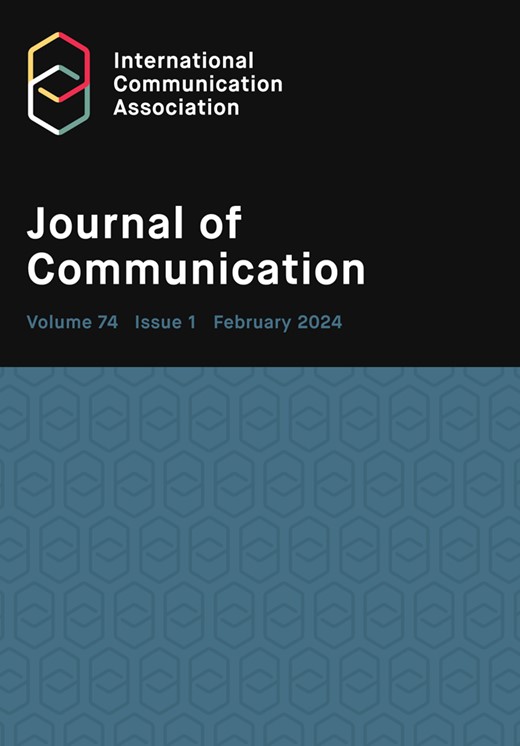交际(剥夺)权利理论:介绍、阐释和应用
IF 5.5
1区 文学
Q1 COMMUNICATION
引用次数: 0
摘要
在这篇文章中,我们提出了交际(剥夺)权利(TCD)理论。该理论有助于探索霸权意识形态的影响,这些意识形态制约和负担着我们的日常生活,并在剥夺公民权的谈话(DT)中被建构和反映出来。TCD 还会问,什么样的交流机制能够重构和抵制这些霸权意识形态。我们首先介绍了这一理论的依据,然后概述了批判后现代主义的假设和 TCD 的主张。我们通过研究问题示例、合适的背景、方法论工具和研究人员可能得出的结论,为使用 "主题对话与对话 "提供指导。我们提供了评价 TCD 的标准,包括其与批判性后现代主义的一致性、作为启发式框架的实用性以及提出主张的能力。我们通过将 TCD 与六个相关的传播理论体系区分开来,并通过解决批判理论所谓的不透明性问题,来回应对 TCD 的潜在批评。最后,我们提供了一个分析实例,以说明研究实践中的 TCD。本文章由计算机程序翻译,如有差异,请以英文原文为准。
Theory of communicative (dis)enfranchisement: introduction, explication, and application
In this essay, we set forth the theory of communicative (dis)enfranchisement (TCD). The TCD is useful for exploring the ramifications of the hegemonic ideologies which constrain and afford our everyday lives, and which are constructed and reflected in disenfranchising talk (DT). The TCD also asks what communication mechanisms work to reify and resist these hegemonic ideologies. We first introduce the warrant for this theorizing, then overview the assumptions of critical postmodernism and propositions of the TCD. We offer guidance for using the TCD via example research questions, suitable contexts, methodological tools, and conclusions researchers can potentially render. We offer criteria for evaluating the TCD regarding its consistency with critical postmodernism, utility as a heuristic framework, and capacity for claims-making. We respond to potential critiques of the TCD by distinguishing the TCD from six related bodies of communication theorizing, and by addressing the purported opaqueness of critical theorizing. Finally, we offer an example analysis to illustrate the TCD in research practice.
求助全文
通过发布文献求助,成功后即可免费获取论文全文。
去求助
来源期刊

Journal of Communication
COMMUNICATION-
CiteScore
11.60
自引率
5.10%
发文量
41
期刊介绍:
The Journal of Communication, the flagship journal of the International Communication Association, is a vital publication for communication specialists and policymakers alike. Focusing on communication research, practice, policy, and theory, it delivers the latest and most significant findings in communication studies. The journal also includes an extensive book review section and symposia of selected studies on current issues. JoC publishes top-quality scholarship on all aspects of communication, with a particular interest in research that transcends disciplinary and sub-field boundaries.
 求助内容:
求助内容: 应助结果提醒方式:
应助结果提醒方式:


